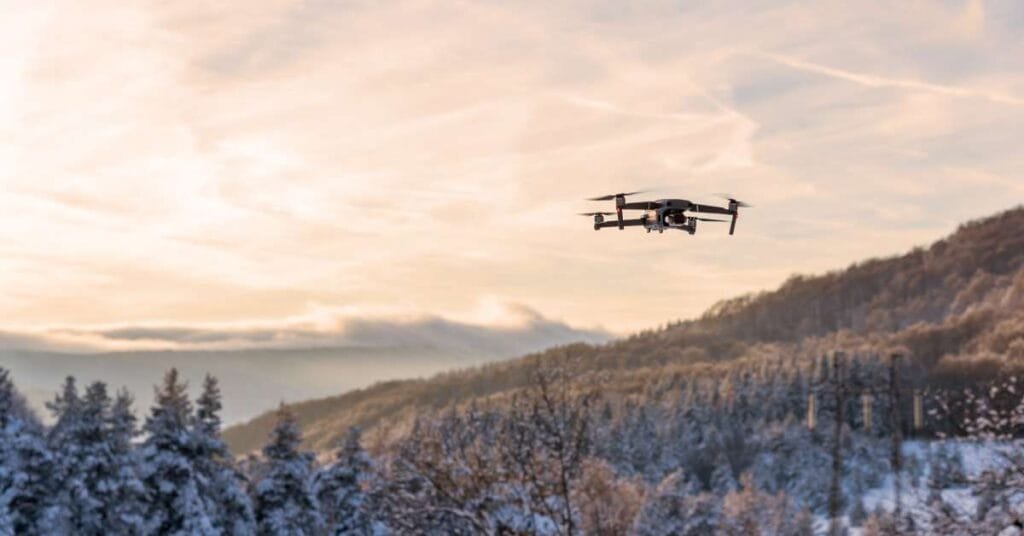As the colder months approach, and winter envelops the landscape in a serene blanket of snow, the scene unfolds into a breathtaking wonderland. However, winter comes with its own set of challenges for drone owners, whether you’re taking photos, farming, or simply using your drone for inspection. No matter if you’re a seasoned pilot or an enthusiastic novice, this article will dive into the best practices for smoothly flying your drone in the winter.
Acclimate the Drone
The overall climate is one of the most important external factors that impact drone flight times. Chilly conditions lead to power drainage and, as a result, shorter flight times.
To mitigate these effects, keep your drone and its batteries warm before takeoff by storing them in an insulated bag or pocket. Additionally, perform a pre-flight check once the drone is outdoors to ensure that all components are functioning properly.
Fly for Short Periods
During winter flights, it’s advisable to limit your flying time to shorter periods, ideally between 10 to 15 minutes. This not only helps to conserve battery life but also allows you to monitor your drone’s performance closely. Frequent breaks will enable you to make necessary adjustments, ensuring a safer flying experience while minimizing the damage associated with winter weather conditions.
Keep Batteries Warm
Before your flight, it’s important to place spare batteries in a warm pocket or use battery warmers specifically for drones. Additionally, consider periodically warming the batteries during extended outdoor use to prevent them from cooling too quickly. This practice not only enhances the operational efficiency of your drone but also reduces the risk of sudden power loss during flight.
Use Landing Gear
Snow and ice can create slippery surfaces that may lead to instability during takeoff and landing and expose your drone unnecessarily to moisture. Using wider or more robust landing gear can provide better elevation above the snow, preventing the drone’s body from coming into contact with potentially hazardous elements. Additionally, consider adding protective measures, such as skid pads or rubber feet, to enhance traction and support your drone during its winter operations.
Dry Thoroughly
After each winter flight, it’s crucial to thoroughly dry your drone to prevent moisture buildup, which can lead to damage or malfunctions. Carefully remove any snow or ice from the drone’s body, propellers, and sensors using a soft cloth.
Pay special attention to the battery compartment and any crevices where water may accumulate. Leaving your drone in a warm, dry environment for a period of time will also help ensure that any residual moisture evaporates, safeguarding your equipment for future flights.
With these best practices in mind, you can confidently fly your drone in that winter wonderland, capturing stunning footage or simply surveying the area. With the right precautions, winter can become one of your favorite seasons for your drone-flying adventures.
